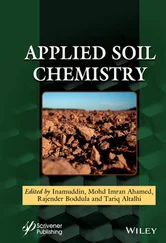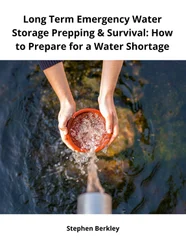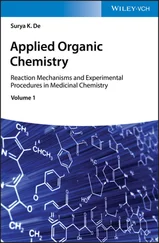| PAEs |
Matrix (sample amount) |
Sample pretreatment |
Separation technique |
LOQ |
Recovery study |
Residues found |
Comments |
Reference |
| DMP, DEP, DIBP, DBP, DMEP, BMPP, DEEP, DNPP, DHXP, BBP, DBEP, DCHP, DEHP DNOP, and DNP |
River and sea waters (20 mL) |
dSPE using 3 mL colloidal G and vortex for 2 min, centrifugation at 3800 rpm for 5 min, and desorption with 5 mL ethyl acetate and 2 g sodium sulfate by vortex for 30 s |
GC-MS |
5–20 μg/L |
72–117% at 20 and 50 μg/L |
Nine river and 2 sea waters samples were analyzed and contained at least 1 PAE at levels from 2 to 78 μg/L |
Ethyl acetate showed higher extraction efficiency than ACN, acetone and hexane as desorption solvent |
[72] |
| DEHP |
Rain, lake and river waters (600 mL) |
dSPE using 20 mg GO-MIP and agitation for 30 min, centrifugation at 12000 rpm for 10 min, and desorption (twice) with 2.5 mL acetone by vortex for 1 min and subsequent sonication for 5 min |
HPLC-UV |
2.82 μg/L |
82-92% at 5, 50, and 500 μg/L |
One sample of each water were analyzed and residues were found at 0.32 ± 0.08 and 1.56 ± 0.32 μg/L in lake and river waters, respectively. |
DEHP was used as the template molecule. Acetone showed higher extraction efficiency than MeOH as desorption solvent |
[69] |
| DMP, DEP, DBP, BBP, DEHP, and DNOP |
Bottle water (200 mL) |
dSPE using 60 mg DMIMs and stirring for 90 min, and desorption with 5 mL dichloromethane by sonication for 15 min |
GC-MS |
1.03–1.35 μg/L |
92.4–99.0% at 25 μg/L |
Two samples were analyzed and residues of DEHP were found at 10.06 ± 0.84 and 11.90 ± 1.70 μg/L |
DEP was used as the dummy template. Dichloromethane showed higher extraction efficiency than acetone, MeOH, chloroform, ethyl acetate and hexane as desorption solvent. DMIMs-dSPE method showed higher recovery values compared with non-imprinted polymers |
[73] |
| DMP, DEP, and DBP |
Tap and mineral waters (20 mL) |
dSPE using 20 mg (β-cyclodextrin-poly (N-isopropylacrylamide) and water bath at 50°C for 25 min., addition of sodium sulfate for polymer condensation purposes, and desorption with 200 μL ethyl acetate by sonication for 15 min. |
GC-MS |
0.021–0.350 μg/L |
82.2–105.6% at 5, 100, and 600 μg/L |
One sample of each water were analyzed and all PAEs were found at levels from 0.14 to 4.97 μg/L |
Ethyl acetate showed higher extraction efficiency than hexane, acetone and dichloromethane as desorption solvent. |
[74] |
| BBP, DBEP, DIPP, DNPP, DCHP, DEHP, DNOP, DINP, and DEHA |
Milli-Q, pond, tap and waste waters (50 mL) |
dSPE using 120 mg Basolite* F300 MOF and shaking for 5 min, vacuum-dried using a SPE column for 30 min, and elution with 15-mL ACN |
HPLC-MS |
0.022–0.069 μg/L |
70–118% at 0.375 and 1.875 μg/L |
Eight samples were analyzed and residues of DEHP were found at levels from 0.21 ± 0.26 to 4.04 ± 0.23 (_ig/L in all samples |
ACN showed higher extraction efficiency than dichloromethane, acetone, cyclohexane and MeOH as elution solvent |
[25] |
| DMP, DEP, DPP, DIBP, DBP, DNPP, DHXP, BBP, DEHP, DHP, DCHP, DPhP and DNOP |
Drinking water (200 mL) |
m-dSPE using 20 mg MWCNTs-m-NPs under agitation for 2 min, a magnet was used for decantation, and elution with 1 mL toluene–acetone (1:4, v/v) |
GC-MS/MS |
0.03–0.1 μg/L |
86.6-100.2% at 5 μg/L |
Three samples were analyzed and no residues were detected |
Toluene showed higher extraction efficiency than acetone, MeOH, hexane and ethyl acetate as elution solvent. To reduce the toxicity of toluene, different proportions toluene-acetone (1:1, 1:4 and 1:9, v/v) were tested and the mix toluene–acetone (1:4, v/v) gave similar results |
[76] |
| DEP, DPP, DBP, DCP, and DEHP |
Bottled and river waters (300 mL) |
m-dSPE using 25 mg G-Fe 3O 4under 3 4 agitation for 15 min, a magnet was used for decantation, and elution (in triplicate) with 0.5 mL acetone by vortex for 10 s |
HPLC-UV |
0.03–0.1 μg/L |
80.0–106.0% at 0.5 and 5 μg/L |
One sample of each water were analyzed and residues of DBP and DEHP were found at 0.12 and 0.15 μg/L, respectively, in the river water sample |
Acetone showed higher extraction efficiency than MeOH and ACN as elution solvent. Coca-Cola and green tea samples were also analyzed |
[78] |
| DMP, DEP, DAP, DIBP, and BBP |
River, reservoir and sea waters (300 mL) |
m-dSPE using 36 mg layered carbon-Fe 3O 4under agitation for 10 min, a magnet was used for decantation, and elution (in triplicate) with 0.5 mL acetone by vortex for 10 s |
HPLC-UV |
0.27–0.33 μg/L |
88.0–104.7% at 5 and 10 μg/L |
One sample of each water were analyzed and residues of DAP and DIBP were found at 0.52 and 0.86 μg/L, respectively, in the river water sample |
Acetone showed higher extraction efficiency than MeOH and ACN as elution solvent |
[26] |
| DMP, DEP, DIBP, DBP, DMEP, BMPP, DEEP, DNPP, DHXP, BBP, DBEP, DCHP, DEHP, DIPP, DNOP, and DNP |
Mineral and tap waters (9.8 mL plus 0.2 mL MeOH) |
m-dSPE using 0.1 mL suspension of MWCNTs-m-NPs in water (40 mg/ml) under vortex for 3 min, a magnet was used for decantation, and elution with 1 mL acetone |
GC-MS |
0.016–0.13 μg/L |
79.6–125.6% at 5 μg/L |
Two mineral and 1 tap water samples were analyzed and contained at least 3 PAEs at levels from 0.36 to 3.3 μg/L |
Acetone showed higher extraction efficiency than MeOH, ethyl acetate and hexane as elution solvent. Juice and carbonated drinks, and one perfume sample were also analyzed |
[77] |
| DMP, DEP, DIBP, DBP, DEHP, BBP, and DNOP |
River and pond waters (10 mL) |
m-dSPE using 20 mg G-Fe 3O 4under vortex for 15 min, a magnet was used for decantation, and elution with 0.4 mL ethyl acetate and 0.5 g anhydrous sodium sulfate by sonication for 15 min |
GC-MS |
0.035–0.19 μg/L |
88–110% at 10,000 μg/L |
One sample of each water were analyzed and residues of all PAEs except DMP were found at levels from 22.2 to 150.8 μg/L |
Ethyl acetate showed higher extraction efficiency than acetone and chloroform as elution solvent |
[79] |
| DMP, DEP, DBP, BBP, and DNOP |
River, tap and mineral waters (20 mL) |
m-dSPE using 20 mg Fe 3O 4-ZIF-8 MOF under sonication for 8 min, a magnet was used for decantation, and elution with 1 mL MeOH by sonication for 8 min |
HPLC-DAD |
0.3–0.8 μg/L |
85.6–103.6% at 1, 10, and 100 μg/L |
One sample of each water were analyzed and at least 2 PAEs at levels from 5 to 60 μg/L were detected in the river and tap water samples |
Methanol showed higher extraction efficiency than ACN, chloroform and tetrahydrofuran as elution solvent |
[85] |
| DMP, DEP, DIBP, DBP, DEHP, BBP, DNOP, DMEP, DEEP, DNPP, BMPP, DHXP, DBEP, DCHP, DPhP, and DINP |
Tap and lake waters (20 mL) |
m-dSPE using 20 mg Fe 3O 4-polypyrrole under agitation for 40 min, a magnet was used for decantation, and elution with 2 mL ethyl acetate by sonication for 60 min |
GC-MS |
0.018–0.068 μg/L |
80.4–108.2% at 5 and 100 μg/L |
One sample of each water were analyzed and at least 5 PAEs at levels from 0.10 to 6.90 μg/L were detected |
An orthogonal fraction factorial design was used for optimization purposes. Ethyl acetate showed higher extraction efficiency than acetone and isopropanol as elution solvent |
[81] |
| DEP, DPP, DBP, DIPP, DNPP, BBP, DCHP, DEHP, DNOP, DINP, DIDP and DEHA |
Mineral, tap, pond and waste waters (25 mL adjusted at pH 6) |
m-dSPE using 60 mg Fe 3O 4-PDA under agitation for 1 min, a magnet was used for decantation, and elution with 6 mL dichloromethane by agitation for 30 s |
GC-MS/MS |
0.009–0.02 μg/L |
71–120% at 0.5 and 5 μg/L |
One sample of each water were analyzed and residues of DEP and DBP were found at levels from 0.36 ± 0.46 to 4.20 ± 0.52 μg/L in the mineral, tap and waste waters |
Dichloromethane showed higher extraction efficiency than acetone, MeOH and ACN as elution solvent |
[22] |
| DMP, DEP, BBP, and DBP |
Carbonated, mineral and soda waters (25 mL) |
m-dSPE using 30 mg poly(1-vinyl-3-butylimidazolium bromide)-PS m-NPs under vortex for 2.5 min, a magnet was used for decantation, and elution with 7 mL ACN by sonication |
HPLC-DAD |
0.017-0.047 μg/L |
77.8-102.1% at 2 and 20 μg/L |
One sample of each water were analyzed and residues of DEP were found at 25.8 and 15.5 μg/L in the carbonate and soda waters, respectively |
ACN showed higher extraction efficiency than acetone, petroleum ether and MeOH as elution solvent |
[82] |
| DMP, DEP, DAP, DIBP, and DBP |
Tap and well waters (5 mL plus 15% w/v NaCl) |
m-dSPE using 15 mg Fe 3O 4-MIL-101(Cr) MOF under agitation for 20 min, a magnet was used for decantation, and elution with 1 mL hexane/acetone (1:1 v/v) by vortex for 3 min |
GC-MS |
0.3–0.5 μg/L |
90.1–106.7% at 5 and 50 μg/L |
One sample of each water were analyzed and no residues were detected |
The use of Fe 3O 4-MIL-101(Cr) MOF showed higher enrichment capacity than Fe 3O 4and MIL-101(Cr) MOF separately. Hexane/acetone (1:1 v/v) showed higher extraction efficiency than ethyl acetate, hexane, acetone and hexane/ethyl acetate (1:1 v/v) as elution solvent. Human plasma was also analyzed |
[86] |
| DMP, DEP, DBP, BBP, DEHP, and DNOP |
Tap, drinking and mineral waters (10 mL) |
m-dSPE using 15 mg Fe 3O 4-MIL-100 MOF and 15-mg Fe 3O 4-SiO 2-polythiophene under sonication for 1 min and oscillation for 15 min, a magnet was used for decantation, and elution with 1 mL ACN by agitation for 10 min |
GC-MS |
1.1–2.9 μg/L |
76.9–109.1% at 1, 10 and 50 μg/L |
One sample of each water were analyzed and no residues were quantified |
A combination of 15-mg Fe 3O 4-MIL-100 MOF and 15-mg Fe 3O 4-SiO 2-polythiophene gave better extraction efficiency than using 30-mg each separately. ACN showed higher extraction efficiency than acetone, ethyl acetate and hexane as elution solvent |
[88] |
| DMP, DBP, BBP, DCHP, and DEHP |
Tap and lake waters (100 mL adjusted at pH 6) |
m-dSPE using 30 mg poly(1-vinylimidazole)-carboxy-latocalix[4] arene m-NPs under sonication for 15 min, a magnet was used for decantation, and elution with 0.5 mL MeOH by sonication for 5 min |
HPLC-UV |
0.05–0.11 μg/L |
89.9–110.0% at 0.5, 1, and 5 μg/L |
One sample of each water were analyzed and contained at least 1 PAE at levels from 0.4 to 8.9 μg/L |
Methanol showed higher extraction efficiency than ACN and chloroform as elution solvent. The use of poly(1 -vinylimidazole)-carboxy-latocalix[4] arene m-NPs showed higher enrichment capacity than Fe 3O 4and poly(1-vinylimidazole) separately. m-dSPE using poly(1-vinylimidazole)-carboxy-latocalix[4] arene m-NPs showed better results compared with SPE with C 18and Cleanert SCX cartridges. Drinks, tonic lotions, and human serum were also analyzed |
[83] |
| DBP, DMP, DCHP, BBP, and DEP |
River water (10 mL) |
m-dSPE using 30 mg 3D N-Co-C/HCF MOF under agitation for 20 min, a magnet was used for decantation, and elution with 6 mL ACN by sonication for 10 min |
HPLC-UV |
0.077–0.377 μg/L |
92.4–104.2% at 1, 10, and 50 μg/L |
One sample was analyzed and contained DMP and DEP at 0.075 and 0.081 μg/L, respectively |
Green tea, sports beverage and white spirit were also analyzed. ACN showed higher extraction efficiency than acetone, MeOH, and ethanol as elution solvent |
[87] |
| DPP, DBP, DCHP, DEHP, DNOP, DIDP, BBP, DINP, DIPP, DNPP, and DEHA |
Sea water (50 mL adjusted at pH 6) |
m-dSPE using 120 mg Fe 3O 4-PDA under agitation for 1 min, a magnet was used for decantation, and elution with 1 mL dichloromethane by agitation for 30 s |
GC-MS |
0.0018–0.319 μg/L |
79–116% at 0.4, 1, and 1.6 μg/L |
Ten samples were analyzed and no residues were quantified |
Sea sand was also analyzed. |
[80] |
MeOHMeOHMeOHMeOHMeOHACN, acetonitrile; BBP, benzylbutyl phthalate; BMPP, bis(4-methyl-2-pentyl) phthalate; DAD, diode-array detector; DAP, diallyl phthalate; DBEP, di(2-butoxyethyl) phthalate; DBP, dibutyl phthalate; DCHP, dicyclohexyl phthalate; DEEP, di(2-ethoxyethyl) phthalate; DEHA, di(2-ethylhexyl) adipate; DEHP, di(2-ethylhexyl) phthalate; DEP, diethyl phthalate; DHP, diheptyl phthalate; DHXP, dihexyl phthalate; DIBP, diisobutyl phthalate; DIDP, diisodecyl phthalate; DINP, diisononyl phthalate; DIPP, diisopentyl phthalate; DMEP, di(2-methoxyethyl) phthalate; DMIMs, dummy molecularly imprinted microbeads; DMP, dimethyl phthalate; DNOP, di-n-octyl phthalate; DNP, dinonyl phthalate; DNPP, di-n-pentyl phthalate; DPhP, diphenyl phthalate; DPP, dipropyl phthalate; dSPE, dispersive solid-phase extraction; G, graphene; GC, gas chromatography; GO, graphene oxide; HCF, hierarchical carbon framework; HPLC, high-performance liquid chromatography; LOQ, limit of quantification; m-dSPE, magnetic solid-phase extraction; MeOH, methanol; MIL, Material of Institute Lavoisier; MIP, molecularly imprinted polymer; m-NPs, magnetic nanoparticles; MOF, metal organic framework; MS/MS, tandem mass spectrometry; MS, mass spectrometry; MWCNTs, multiwalled carbon nanotubes; PAE, phthalic acid ester; PDA, poly(dopamine); PS, polystyrene; SPE, solid-phase extraction; UV, ultraviolet; ZIF, Zeolitic Imidazolate Framework.












